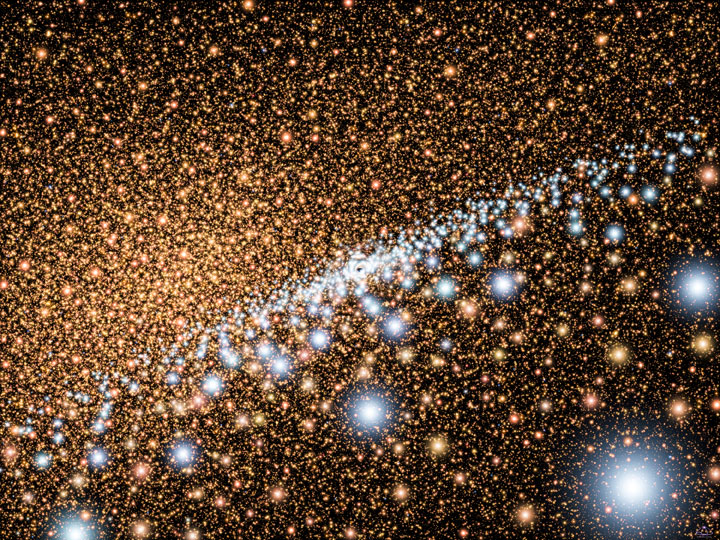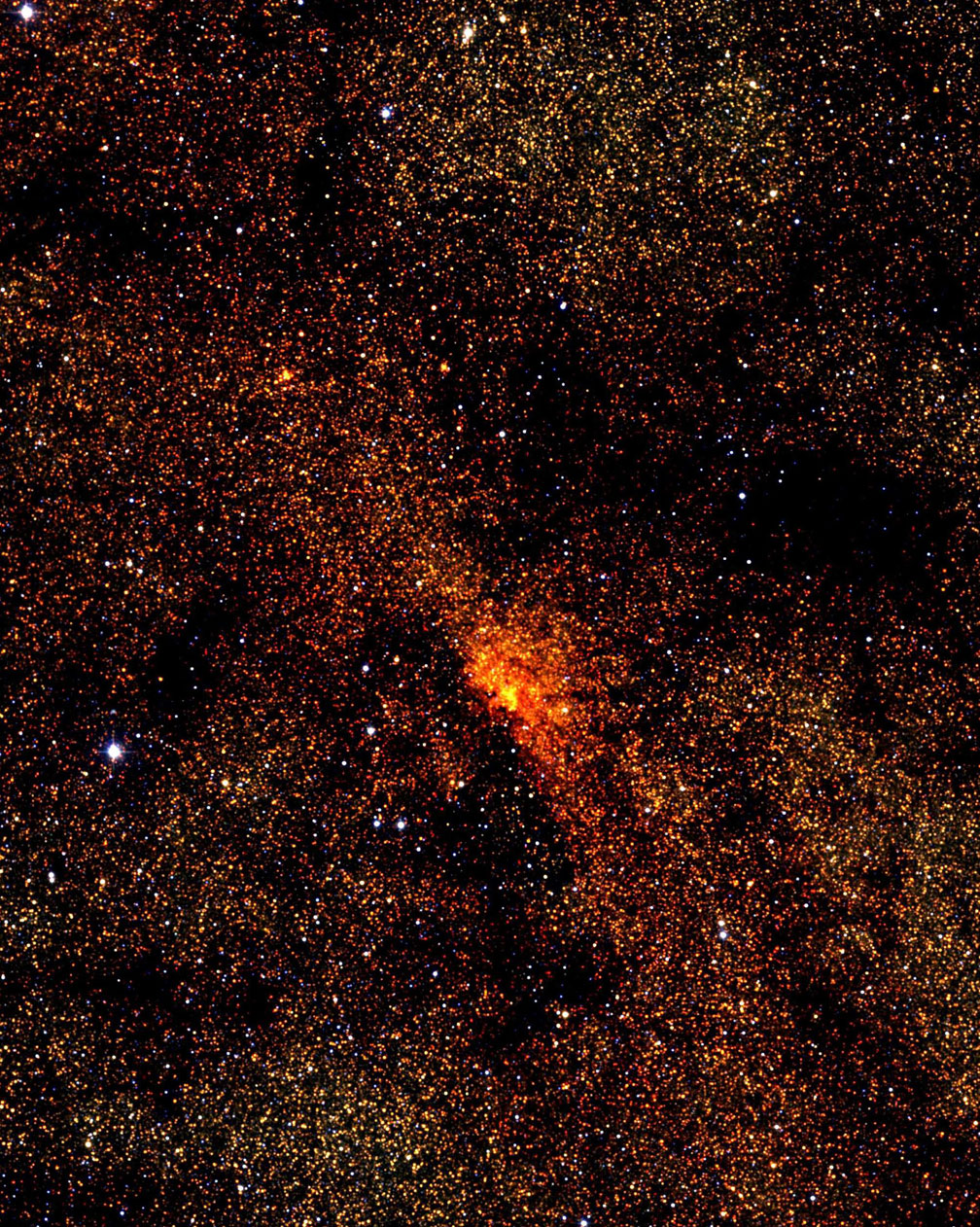Image List
-

This artist's concept shows young, blue stars encircling a supermassive black hole at the core of a spiral galaxy like the Milky Way. The background stars are the typical older, redder population of stars that inhabit the cores of most galaxies (including our own). CfA astronomers caught two stars in the act of forming within a few light-years of the Milky Way's center. Their find demonstrates that stars can form at our galaxy's core despite the powerful gravitational tides generated by the black hole.
NASA, ESA, and A. Schaller (for STScI) -

This 0.6 by 0.7-degree infrared photograph of the galactic center shows a large population of old, red stars. However, the discovery of two young protostars within a few light-years of the center of the Milky Way shows that stars can form there despite powerful gravitational tides due to the supermassive black hole.
2MASS/E. Kopan (IPAC/Caltech)